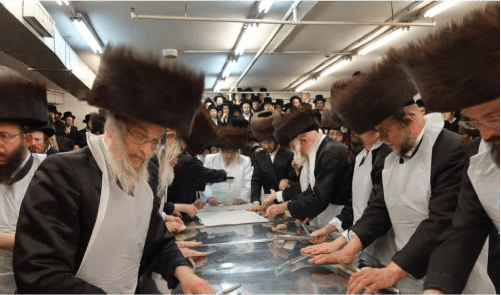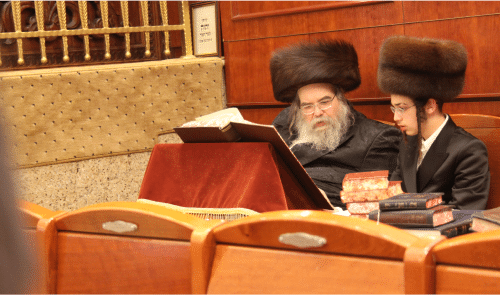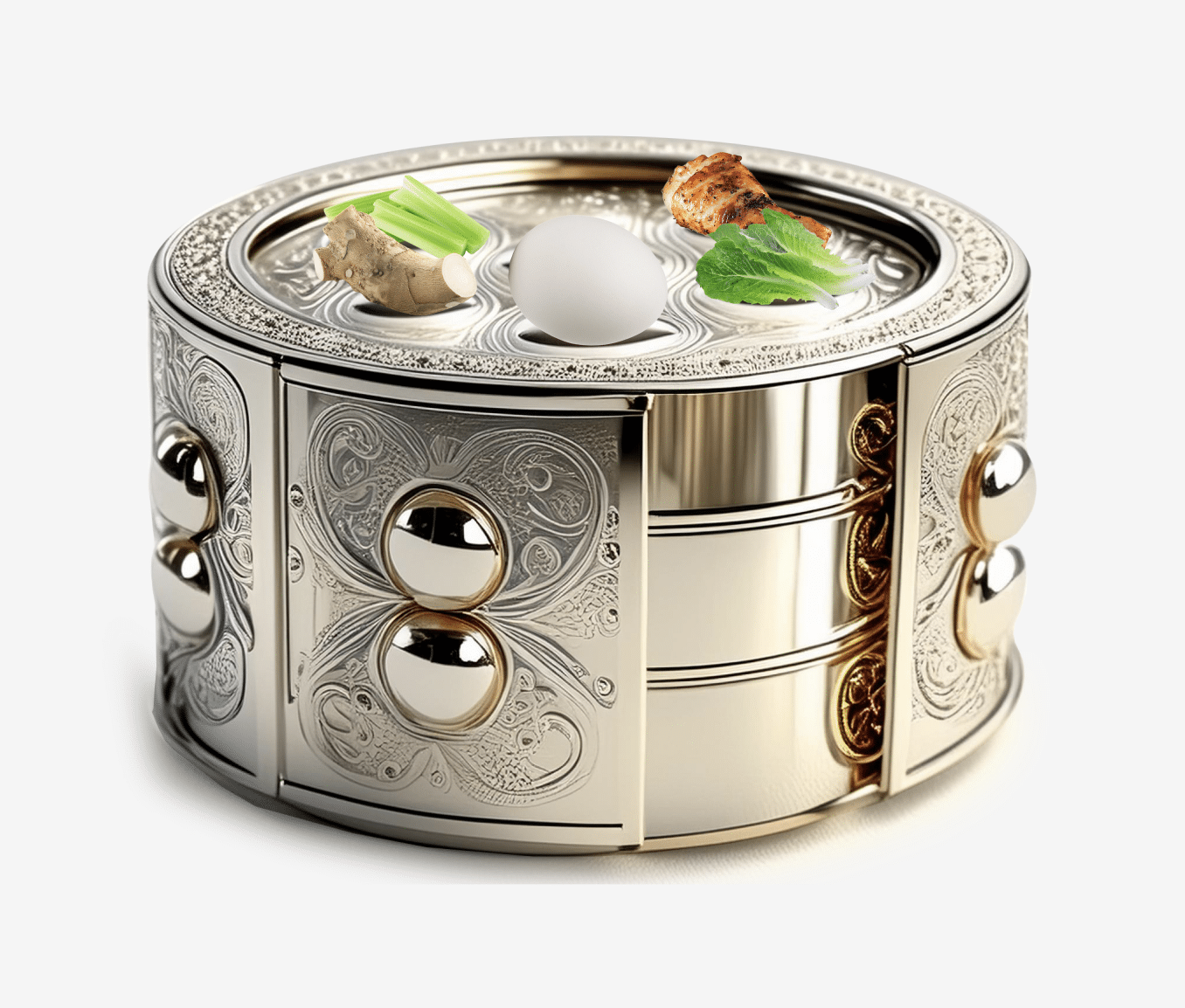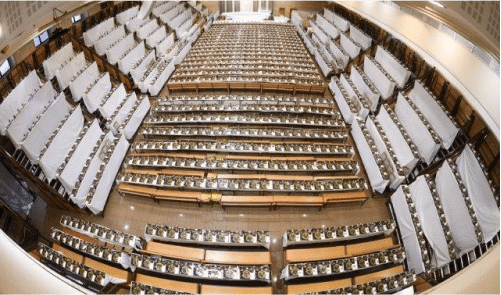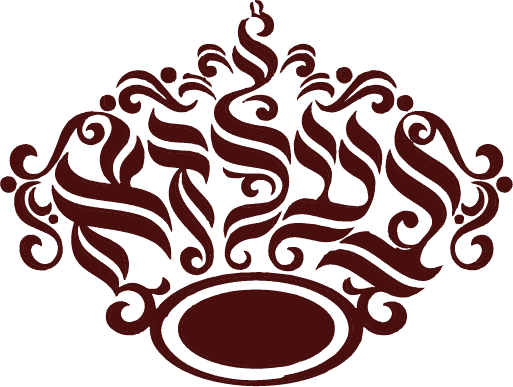
פסח
Pesach
The Celebration of the Jewish People’s Redemption
ט”ו-כ”ב ניסן / April 23-30, 2024

WHAT IS PESACH?
Pesach is the Jewish name for Passover. It is called so because Hashem “passed over” the homes of the Jews during the historical event of Makas Bechoros – the plague of the firstborn. It is a holiday commemorating the Exodus from Egypt when Hashem suspended the usual laws of nature to punish the Egyptians and take the Jews out of their slavery in a miraculous Exodus that would stay imprinted on the world’s conscience forever.
However, there is another meaning to the name Pesach. פה – סח – the mouth speaks. This is the night we start our children on a path of complete trust and faith in Hashem. We do so by telling of our history and experiencing Hashem’s miracles.
והגדת לבנך – the lesson of chinuch of inspiration has a special emphasis on this night.
Peh-Sach – open your mouths this year with praise, stories, and lessons for the children. But let us remember to keep those lessons flowing long.
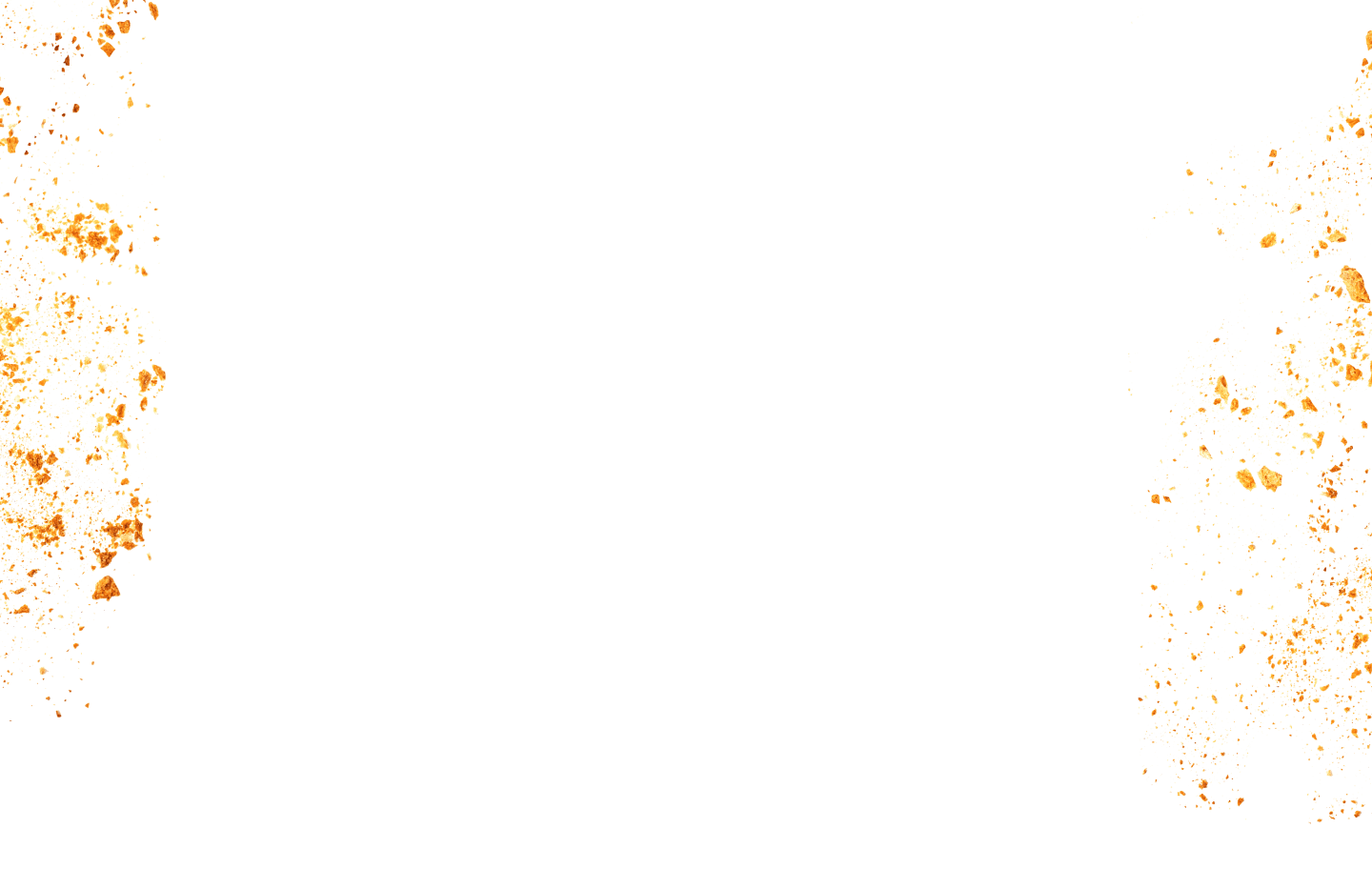
PREPARING YOUR HOME
Getting Rid of Chametz
Chametz refers to the fermentation of one of five basic grains (wheat, barley, rye, oats and spelt). Any time one of these grains comes into contact with water for any length of time above 18 minutes, it is rendered Chometz. Hence, Matza is made, from start to finish, within 18 minutes.
We are forbidden on Pesach to own, find or eat Chometz. Hence, the frenzy before Pesach to get our homes “chametz free.”
As Jews, we clean our homes in anticipation of being Chametz-free for Pesach. No, you don’t have to whitewash your walls, although many households did so previously. You MUST get rid of all the Chametz, have different dishes and pots just for Pesach and make sure no Chametz will be found in your home or business on Pesach.
First, we clean. Focus on places you will be using extensively. Make sure your eating area is well-done.
After the cleaning is all done, we do something called Mechiras Chametz. We can sell all Chametz we don’t want to destroy so that ownership is moved from us to a non-Jew for the duration of Pesach. In the contract, we get a buy-back clause, allowing the non-Jew to sell us back our Chametz after Pesach. A rabbi does the transaction on your behalf.
The night before Pesach, we go on a Chametz hunt. We search our homes to make sure we’ve really made it Chametz-free. We declare that any Chametz still left behind is null and void, ownerless, and not ours. So that the search for Chametz (including a Bracha) is not in vain, the custom is for ten pieces of chametz to be put out before the search so that when looking for that Chametz, ten bits are found.
Bedikas Chametz instructions and Brachos.
The next morning, Erev Yom Tov, we burn any Chametz we had found the previous night, and do the declaration again.
Homes now Chametz-free, it is time to head to the crux of Pesach, the Seder.
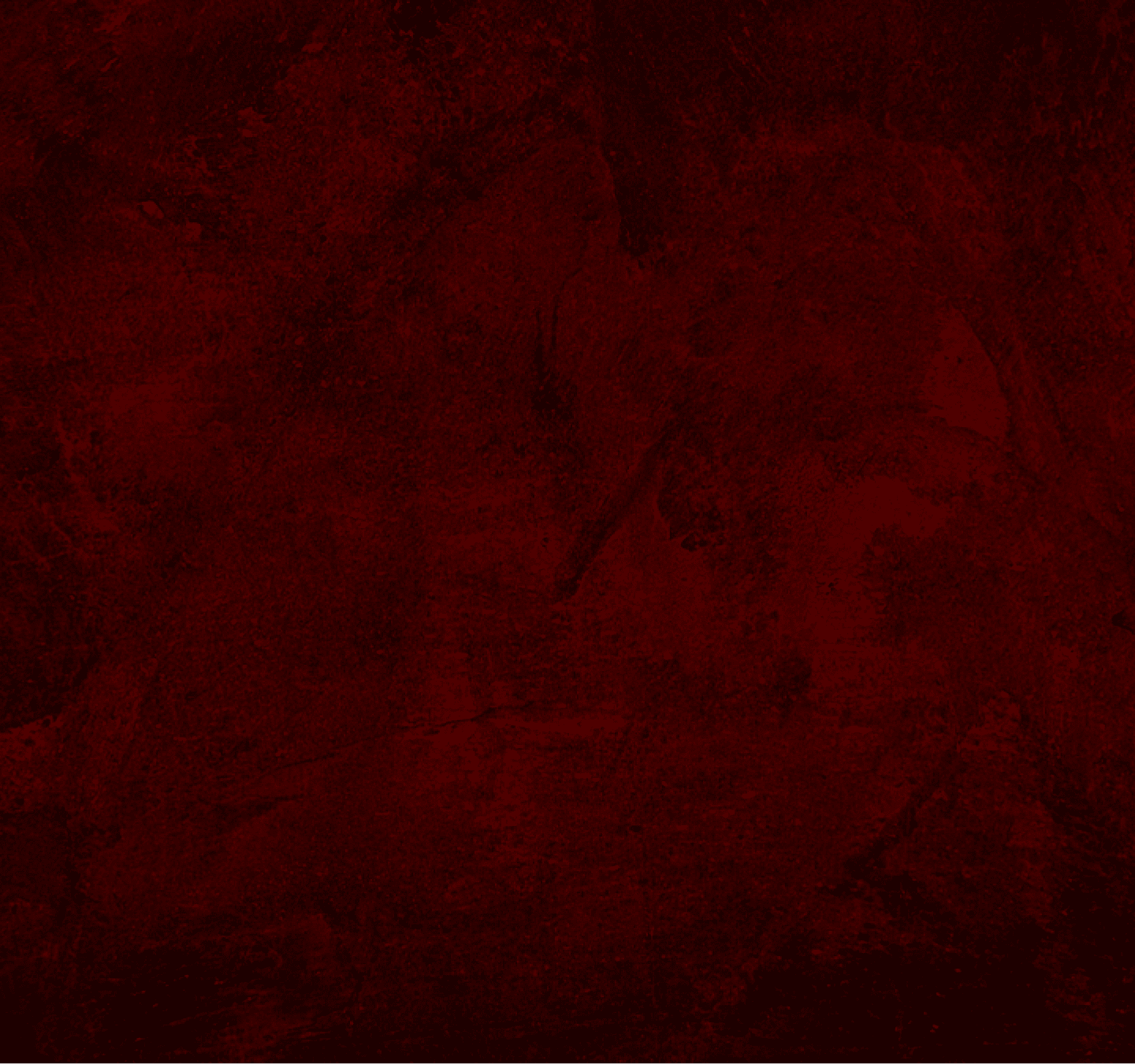
SEDER NIGHT
What, Why and How
Seder, in literal translation, means order. There is an “order” to the night’s flow of tradition on the first two nights of Pesach. A 15-step program is set up for us to follow. We start off with Kadesh – with sanctification and purpose. We end with Nirtzah – with being beloved by Hashem.
The first thing we do on Pesach night is set the stage for what will be the discussions. Visual props for our teaching lessons. We are going to teach ourselves and our children, and visual teaching tools are put into place. We do this by setting up a Seder Plate that will be prominent on the table and show us what the night is all about.
Seder Plate / קערה
The Seder Plate is set up with three Matzas below a plate. The plate has six sections.
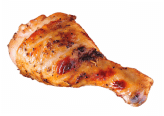
זרוע – Zeroah
A shank bone (some folks use a chicken wing) that is roasted, which is to remind us of the Pesach Karban, the Paschal lamb.

חזרת – Chazeres
The bitter herbs symbolizing the bitterness and harshness of slavery in Egypt
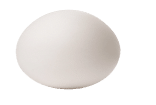
ביצה – Baytzah
An egg, symbolizes the sacrifices brought in the times of the Beis Hamikdash.
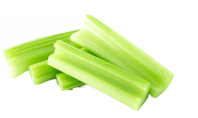
כרפס – Karpas
A bit of vegetable (often potato or celery is used).
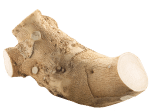
מרור – Marror
The bitter herbs symbolizing the bitterness and harshness of slavery in Egypt
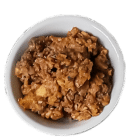
חרוסת – Charoses
A mixture made of wine, nuts, apples, and ginger that looks like mortar to remind us of the bricks made for the pyramids.
There are different customs and traditions for placing these items, but here is a link to the layout of your Seder plate according to the most widely used customs.
THE SEDER PLATE
THE SEDER SIMANIM – סימני הסדר
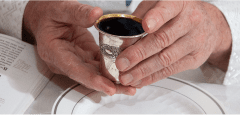
קדש – Kadesh
We make the Kiddush of the night and drink Cup 1 of the 4 Cups of Wine
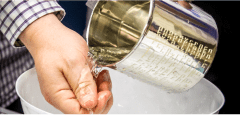
ורחץ – Urchatz
We wash our hands and do NOT make a blessing of Al Netilas Yadayim
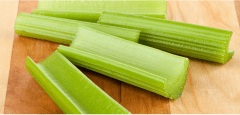
כרפס – Karpas
We take a bit of vegetable (such as potato or celery), and dip it into saltwater and say the blessing – בורא פרי האדמה
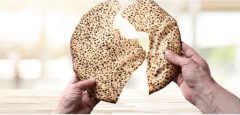
יחץ – Yachatz
We break the “middle matzah” the second Matza in the pile of three Matzos. The bigger half gets hidden away to become the Afikomin
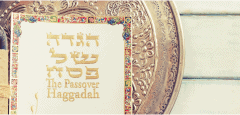
מגיד – Magid
We recount the history of going into Egypt, and tell the story of how Hashem saved us. We drink the 2nd cup of wine.
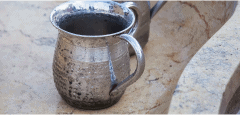
רחצה – Rachtzah
We wash our hands again. This time we DO say the blessing Al Netilas Yadayim
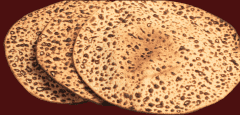
מוציא – Motzee
We say the blessing on the Matzah – Hamotzi

מצה – Matzah
We eat the Matzah and say the blessing Al Achilas Matzah
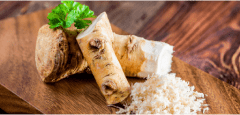
מרור – Marror
We eat the bitter herbs dipped in the Charoses and say the blessing of Al Achilas Maror
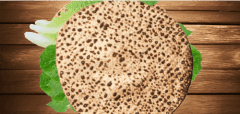
כורך – Koraych
We make a “sandwich” of matzah and maror and say Zecher L’mikdash K’Hillel

Shulchan Oraych
שלחן עורך –
We have a wonderful festive Holiday meal
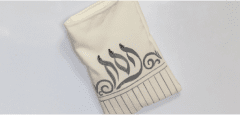
צפון – Tzafun
We “find” the Afikomin that was hidden away previously and eat it
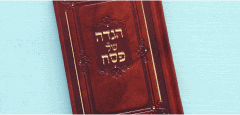
ברך – Baraych
We say the Birchas HaMazon, the Grace After Meals, and drink our 3rd Cup of Wine

הלל – Hallel
We sing songs of praise and thanks to Hashem and drink the last of the 4 cups of wine

נרצה – Neertzah
We’ve gotten to the high point where we are spiritually elevated and beloved by Hashem

PESACH, MATZAH, AND MARROR
We are told that at the Seder, the crux of the night is to remember to talk about PESACH, MATZAH, and MAROR. If you don’t mention these three items and don’t explain these three items, you haven’t fulfilled your obligations of the night of Pesach.

Pesach is about Hashem saving us, which was commemorated by the eating of the Korban Pesach – the Paschal lamb in the times of the Beis Hamikdash.

Matzah reminds us of the speed at which the miracles unfolded to get us out of that situation. Our Exodus was so quick we had no time to bake bread.

Maror is a symbol of bitterness and suffering. Why is that lumped together with Pesach and Matzah…and why does it come last in the order of things?
It is hard to know that at the time of suffering, but when we get past a crisis, we often do not regret going through that pain. We often feel that the pain and challenges have made us better people, deeper emotional creatures, and able to appreciate the good times that much more. Therefore, after all, is said and done, after the redemption of our people, we are thankful for the Maror, too.
That is the message of the Maror, that even in the bitterest times, we carry the song, knowing we will rejoice again, someday, no matter what. As it says, “Am Yisrael Chai!” We are alive, grateful for all our past challenges, which have forged us into a beautiful nation.
It is called post-trauma growth. After hard times, we often grow greater and more confident. That is why we put the Marror last. Only after Pesach and Matza, after the redemption, can we appreciate having gone through the hard times, too.
MINHAGIM OF BELZ

PESACH IN BELZ
divrei torah

INSPIRE YOUR INBOX.
Enjoy a weekly dose of Chassidic insights, highlights and happenings at Belz.

